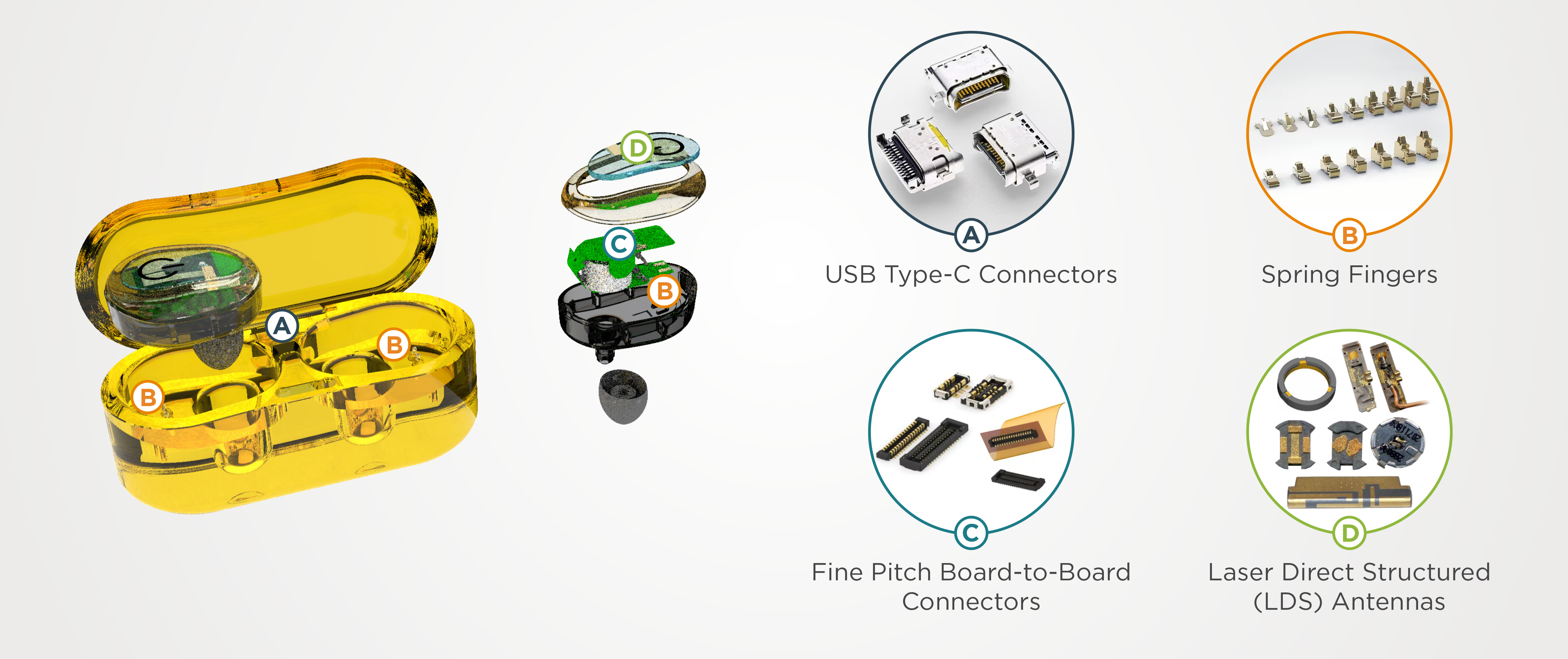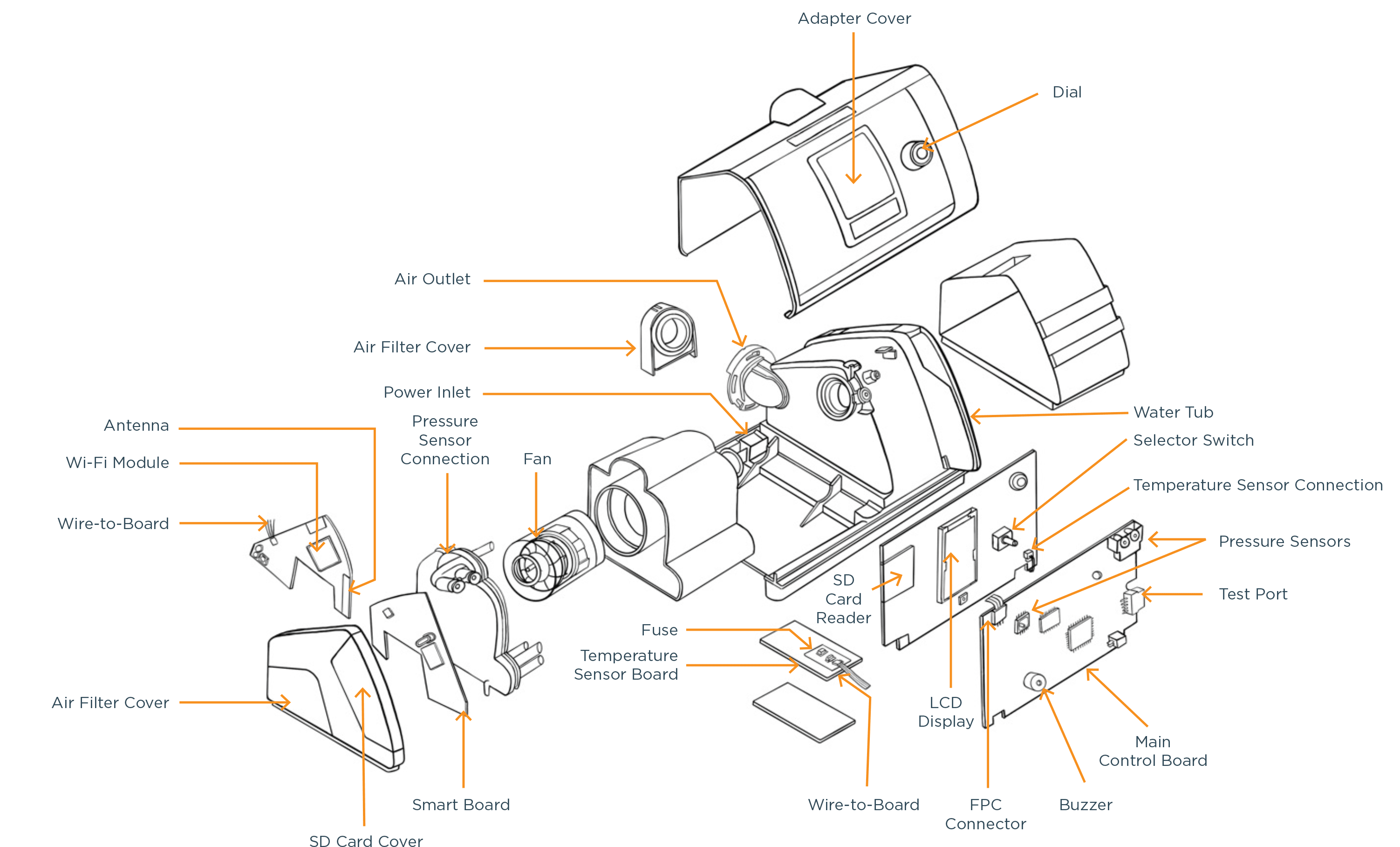Electronics Make Healthcare Smarter
The Backbone of a Digital Healthcare Revolution

Image Source: Mouser Electronics
By Marcel Consée, Mouser Electronics
Integrating modern technology with healthcare to create a more efficient, personalised, and data-driven medical ecosystem is often referred to as “smart health.” It leverages innovations such as wearable devices, mobile health applications, artificial intelligence (AI), big data analytics, and telemedicine to improve patient outcomes, streamline healthcare delivery, and reduce costs.
The rise of smart health would not be possible without the rapid advancement and integration of electronics. From wearable sensors to AI-powered diagnostic devices, electronics form the backbone of modern healthcare systems that are intelligent, interconnected, and patient-centric. These electronic systems enable real-time monitoring, remote diagnostics, predictive analytics, and personalised treatment, all redefining how healthcare is delivered and experienced.
The Role of Electronics in Smart Health
At the core of smart health lies a vast ecosystem of electronic devices that collect, process, transmit, and store health-related data. These electronics are embedded in wearable gadgets, implantable devices, diagnostic tools, hospital infrastructure, and even mobile health applications. Together, they provide the sensory and processing capabilities required for healthcare systems to be proactive, responsive, and efficient.
Wearable Electronics and Sensors
One of the most visible aspects of smart health is the use of wearable electronics. Smartwatches, fitness bands, and medical-grade biosensors monitor vital parameters such as heart rate, body temperature, respiration, blood oxygen, and glucose levels. These wearables contain sophisticated microelectronic components—sensors, microcontrollers, batteries, and wireless modules—that operate seamlessly to collect and transmit real-time data.
Even common devices such as hearing aids have already become deeply embedded computing devices. Figure 1 shows the electromechanical components necessary to create a comfortable hearing experience.

Figure 1: Connectivity Solutions for ear computers (Source: TE Connectivity)
Advanced sensors, such as photoplethysmography (PPG), electrocardiography (ECG), and galvanic skin response sensors, convert physiological signals into digital data that can be processed and analysed by healthcare providers or AI algorithms.
Implantable and Ingestible Devices
Implantable electronics, such as pacemakers, insulin pumps, and neurostimulators, are critical for managing chronic conditions. These devices use miniature circuits and biocompatible materials to perform complex functions within the body while maintaining safety and reliability. Some modern implants are equipped with wireless communication capabilities, allowing doctors to remotely monitor device performance and patient status.
Ingestible sensors—tiny electronic pills that transmit data from inside the gastrointestinal tract—are also emerging in smart health. They can track medication adherence, measure pH levels, and identify abnormalities without invasive procedures.
Diagnostic and Imaging Equipment
Electronics have long been foundational to diagnostic tools like MRI, CT scanners, ultrasound, and X-ray machines. In the smart health era, these systems are being upgraded with advanced electronics that enhance resolution, reduce radiation exposure, and enable faster image processing.
Digital pathology, for example, uses high-resolution scanning equipment and AI-driven image analysis to detect disease markers in tissue samples. Electronics enable this process to be faster and more accurate, supporting earlier and more effective interventions.
Point-of-Care and Portable Devices
Smart health emphasises accessibility and speed, leading to the growth of point-of-care (POC) electronic devices. These portable diagnostics, such as handheld ECG monitors, glucose meters, and blood pressure cuffs, can be used at home or in remote locations. They are designed with embedded processors, wireless connectivity, and user interfaces, allowing quick testing and result sharing.
Many of these devices now integrate Bluetooth® or Wi-Fi modules that sync data directly with electronic health records (EHRs) or mobile applications, allowing real-time monitoring and immediate clinician feedback.
Hospital Infrastructure and Smart Beds
Modern hospitals also benefit from electronic integration through smart infrastructure. Smart beds with embedded pressure sensors can monitor patient movement to prevent bedsores, while RFID-enabled equipment and wearables help track patients and medical assets in real time. Electronic access control systems, environmental sensors, and automated medication dispensers further enhance safety, efficiency, and infection control.
Data Processing and Communication
Behind the scenes, microprocessors, memory chips, and wireless modules embedded in medical devices ensure smooth data flow between devices, patients, and healthcare professionals.
Communication standards such as Bluetooth Low Energy, Zigbee, NFC, and Wi-Fi are critical for device interoperability and real-time data exchange. Meanwhile, edge computing—powered by microcontrollers and embedded AI chips—enables data processing at the device level, reducing latency and dependency on cloud infrastructure.
Energy Efficiency and Power Management
Power efficiency is vital in medical electronics, especially in wearables and implants. Innovations in battery technology, energy harvesting, and low-power circuit design ensure that devices can operate for extended periods without frequent charging or replacement. For instance, energy-harvesting electronics can use body heat or movement to generate power for small medical sensors, enhancing usability and patient compliance.
The Role of Electromechanical Components
The engineering of smart health monitoring devices presents design challenges in miniaturisation, component integration, and durability. Companies like TE Connectivity supply their know-how of antenna, connector, and sensor technologies, and deliver wireless connectivity that enables devices to operate in harsh, life-saving environments. Figure 2 shows an exemplary health monitoring device, where many different technologies come together.

Figure 2: A deeper look inside a smart health monitoring device. (Source: TE Connectivity)
The Future of Smart Health
We are already seeing further convergence of electronics with AI, IoT, and biotechnology. Flexible electronics and e-textiles will lead to more comfortable, wearable solutions. Brain-computer interfaces (BCIs) and smart prosthetics may restore or enhance lost functions. Quantum electronics and neuromorphic chips may bring disease prediction and mental health management breakthroughs.
Ultimately, the role of electronics in smart health is to make healthcare more Predictive, Preventive, Personalised, and Participatory—a vision known as P4 medicine. As electronics continue to evolve, they will remain a driving force in creating smarter, safer, and more effective healthcare systems for the future.